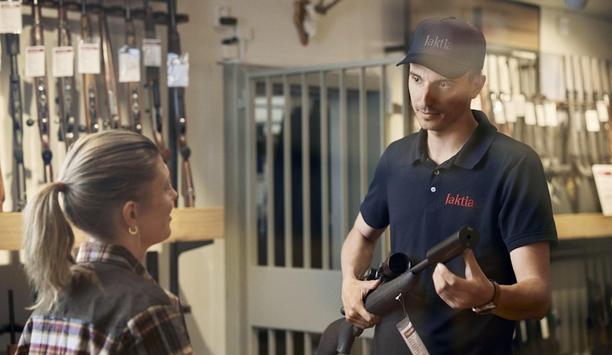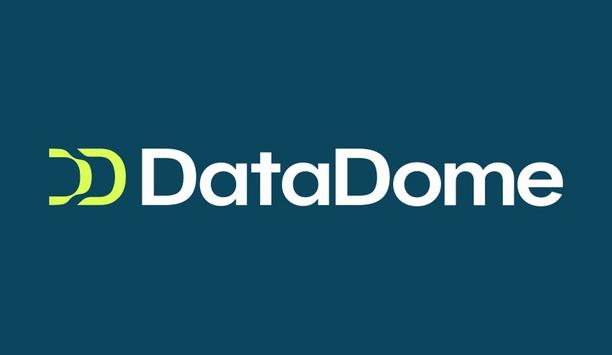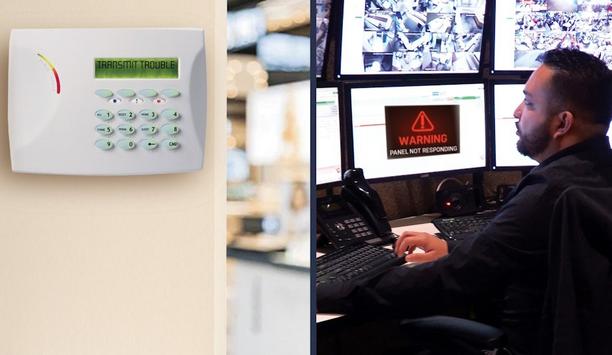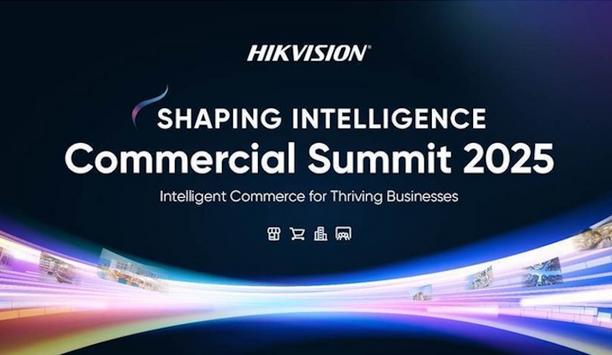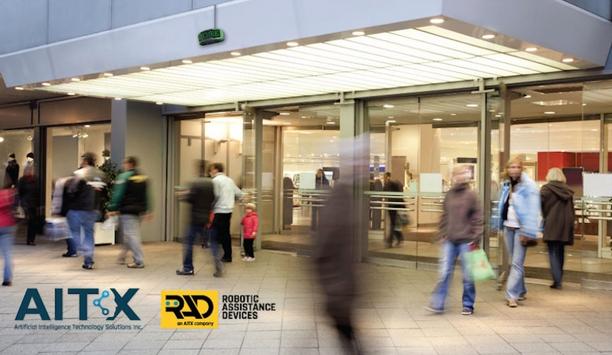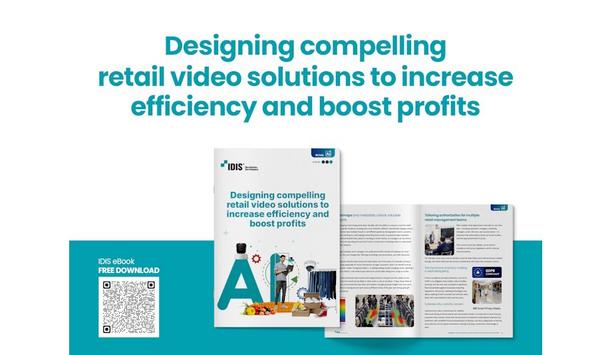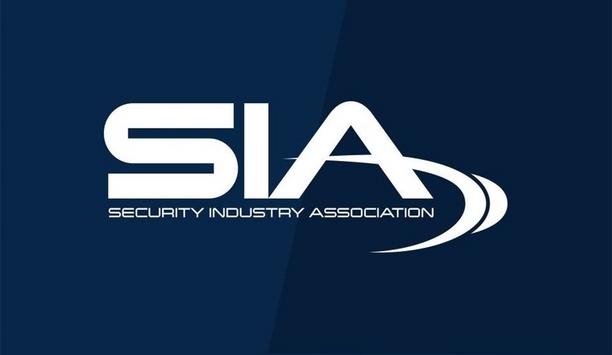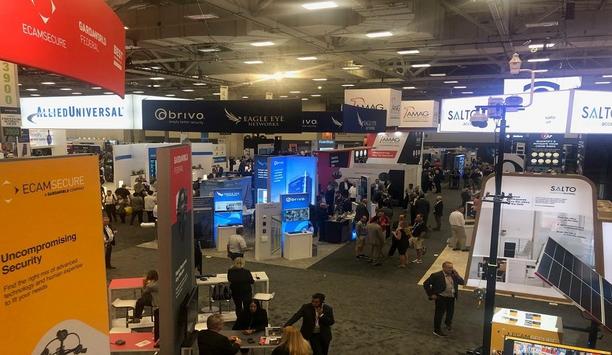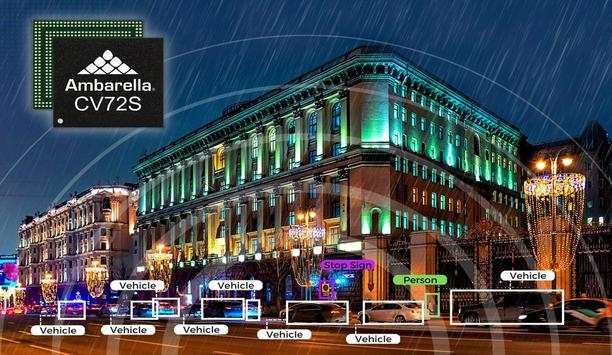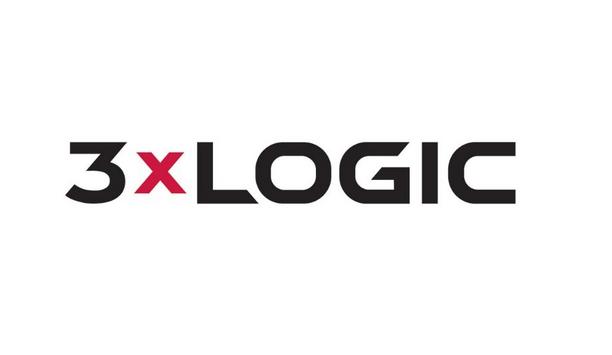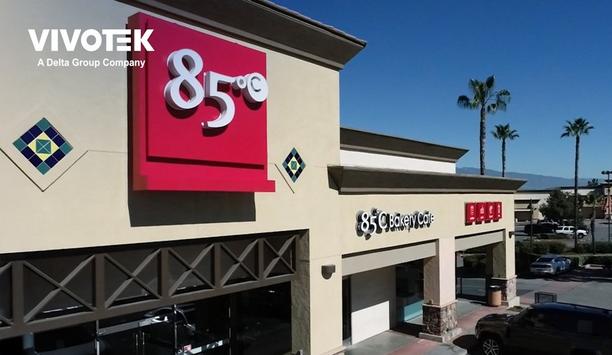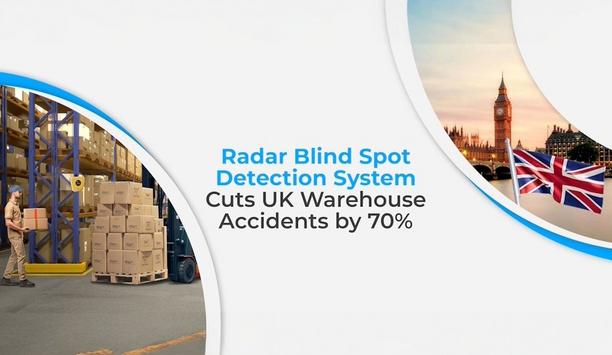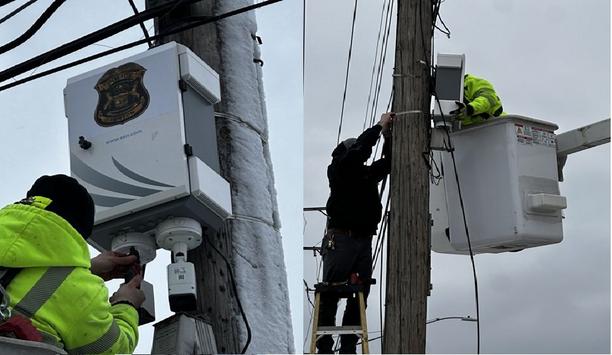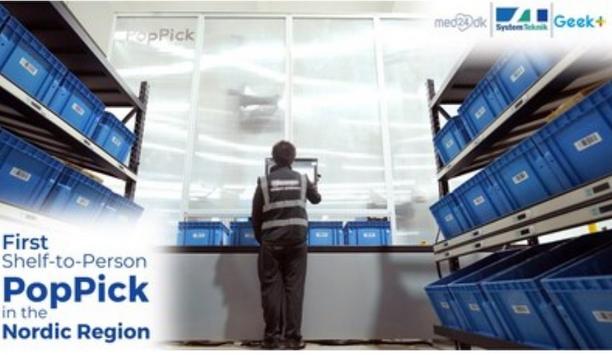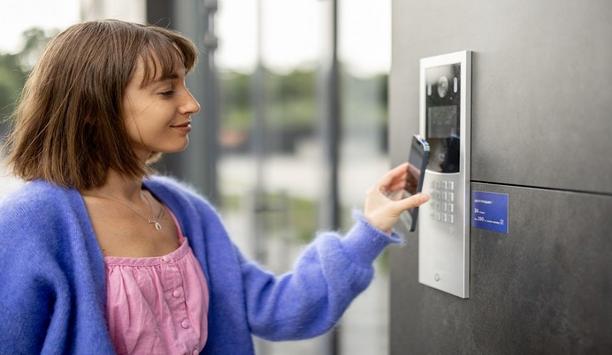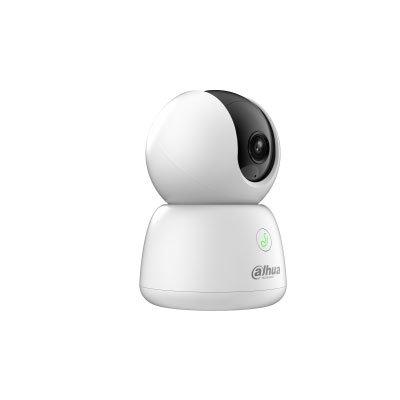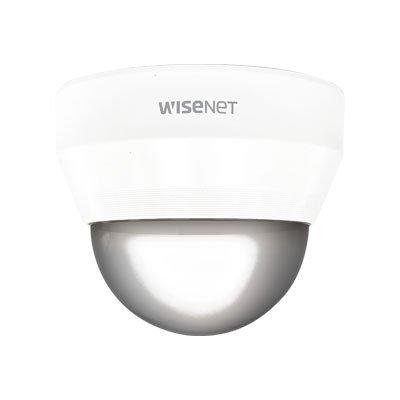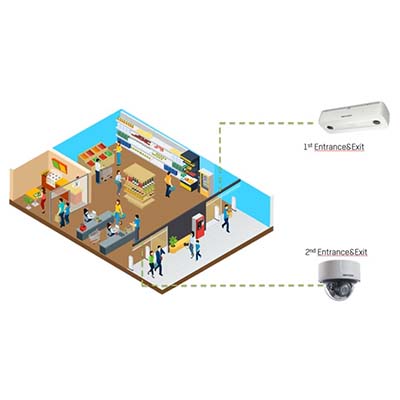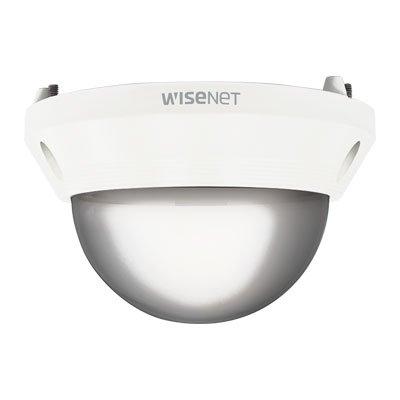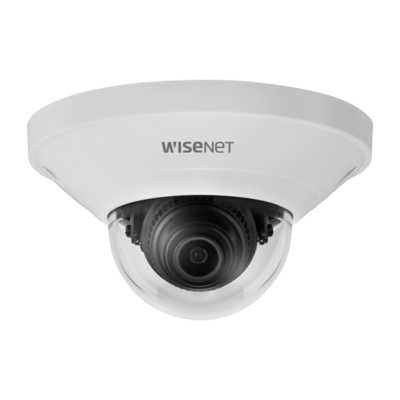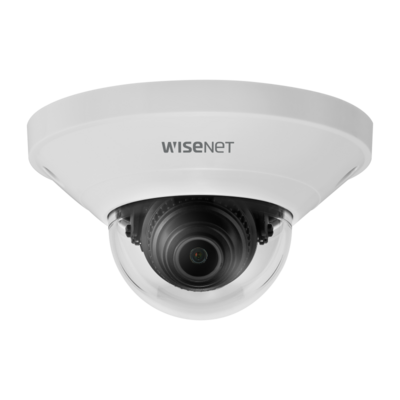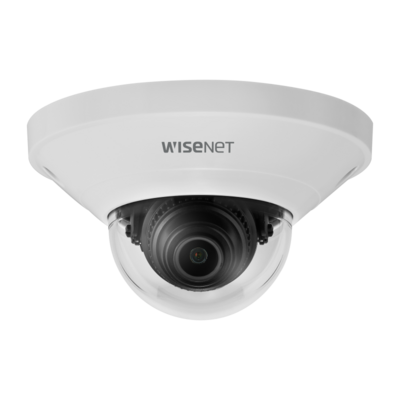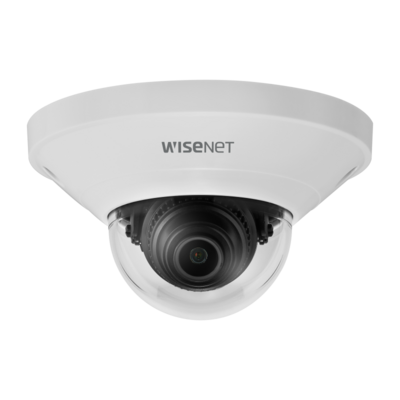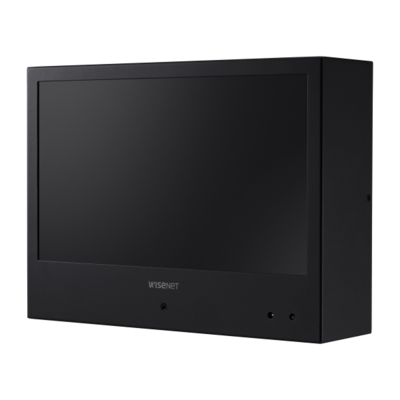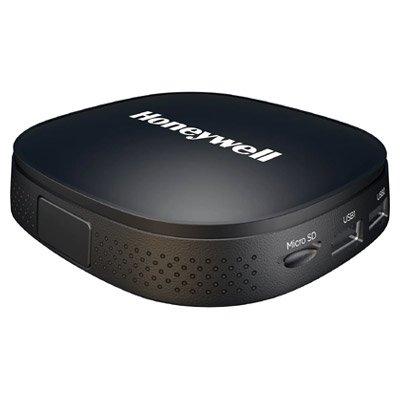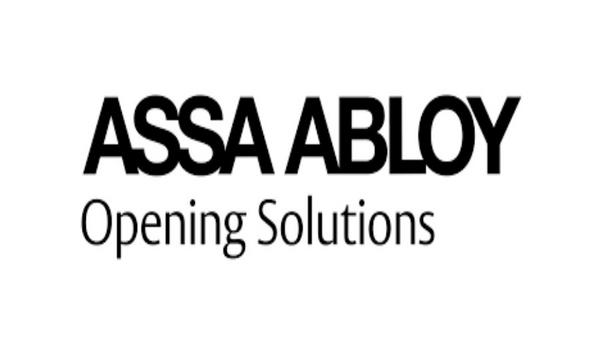Retail security systems
Wachter Inc., a pioneering technology solutions integrator and innovator, is pleased to provide the Loss Prevention Research Council (LPRC) with a state-of-the-art Proto LUMA hologram unit to enhance retail education and innovation efforts. This advanced technology will serve as an immersive platform to educate the retail community on loss prevention, history, and ongoing trends, while also offering dynamic marketing and engagement opportunities. Proto LUMA unit The Proto LUMA unit, a fully...
Gunnebo Safe Storage has partnered with Jaktia to deliver a tailored storage solution for a new store offering high-tech equipment and ammunition. Designed to integrate seamlessly within a restricted layout, the system was developed to meet all regulatory obligations and Police Preferred standards. As Sweden’s pioneering retailer for hunting, fishing and outdoor activities, a tight schedule for a new store opening meant Jaktia required a secure and certified storage system that could be i...
Securitas UK and Hays Travel are proud to celebrate over 10 years of working together to deliver safe, secure, and welcoming environments across Hays Travel’s nationwide network of retail branches. Since 2015, Securitas has been a trusted security partner to Hays Travel, providing a tailored service that supports the company’s commitment to customer service. From alarm response to mobile patrols, the partnership has evolved to meet the changing needs of the UK’s largest indepe...
New independent research from Six Degrees, the secure, integrated cloud services provider, reveals a dangerous disconnect between retailer cyber confidence and real-world cyber resilience. Data from the Six Degrees Retail Whitepaper shows that while most UK retailers are highly confident about their security posture, one in five admit their current defenses wouldn’t prevent a cyber-attack. This disconnect has far-reaching impacts because the retail sector faces an increasing volume of att...
More than half (52%) of retail workers say they are likely to leave their current job in the next 12 months due to personal safety concerns, according to new research conducted by the Loss Prevention Research Council (LPRC) and in partnership with Verkada. The State of Retail Safety report reveals an alarming escalation in workplace violence from 2024, and offers critical insight into solutions that can protect retail workers, consumers and inventory without escalating tensions. Key findi...
As agentic commerce takes hold, retailers are entering a new phase of automation, where AI agents act on behalf of real users to browse, compare, and buy. But these same capabilities can be weaponized by fraudsters. This Black Friday, the challenge isn’t stopping bots; it’s distinguishing between legitimate agent-driven interactions and malicious automation designed to mimic them. Identity amid rising automation That distinction matters most at the account layer, where retailers m...
News
Interface Systems, a pioneering managed service provider delivering business security, networking, and business intelligence solutions to multi-location enterprises, announced the launch of TamperShield, its breakthrough monitoring technology designed to identify alarm system interference before an intrusion occurs. Traditional alarm monitoring only reports once an alarm is triggered. TamperShield continuously verifies that the alarm panel can communicate properly, providing faster visibility into communication failures, device tampering, and system health issues. The result is greater alarm uptime, faster threat awareness, and stronger protection for businesses that cannot afford downtime in their security operations. Interface's monitoring centers TamperShield is currently compatible with DMP and Honeywell alarm panels, allowing organizations to upgrade their monitoring capabilities without a complete system replacement. When an alarm panel is unable to communicate, an alert is sent to Interface's monitoring centers to notify customers and engage law enforcement, ensuring continuous protection and immediate situational awareness. Interface operates TMA Five Diamond-certified, UL-listed Interactive Security Operations Centers (iSOCs) staffed 24/7 by U.S.-based security experts who monitor more than 75,000 customer locations nationwide. These centers provide real-time response and alarm video verification, ensuring customers receive rapid, professional intervention whenever communication disruptions or intrusion attempts are detected. TamperShield Alarm Monitoring A national jewelry retailer is already deploying TamperShield Alarm Monitoring across all stores nationwide, reflecting strong customer demand in the jewelry and high-value retail sectors for intelligent, resilient alarm monitoring solutions that combat increasingly sophisticated criminal tactics. "Criminals are becoming more sophisticated in how they attempt to disable security systems before committing crimes," said Steve Womer, Senior Vice President of Product at Interface Systems. Interface's comprehensive portfolio Steve Womer added: "TamperShield Alarm Monitoring ensures that customers know the moment their system is compromised, so they can respond immediately." TamperShield strengthens Interface's comprehensive portfolio of integrated security solutions, which includes advanced interactive remote video monitoring, intrusion detection, cloud video management, video analytics, and access control, offering businesses an intelligent, layered approach to safeguarding their assets and people.
Hikvision has announced that it will host the Shaping Intelligence 2025 – Commercial Summit from November 19-21, 2025, in Bangkok, Thailand. Under the theme "Intelligent Commerce for Thriving Businesses," the summit will bring together 250+ senior executives, business leaders, technology innovators, and industry experts to explore intelligent commercial transformation, paving the way for thriving businesses. Intelligent commerce solutions "We are excited to gather industry pioneers in Bangkok to showcase how intelligent commerce solutions are reshaping business operations," said Vivianna Wong, Hikvision Pan Asia Pacific President. "This summit represents our commitment to driving digital transformation through practical, scenario-based AI applications that deliver measurable business value." Key highlights The three-day summit features a robust agenda designed to provide both strategic insights and hands-on experience. Key highlights include: Keynote presentations exploring how AI technology delivers transformative impact across key commercial business functions Global case studies featuring actionable insights and practical solutions from speakers across Thailand, Pan-Asia, the Middle East, Latin America, and Europe, demonstrating how AI innovations translate into tangible business outcomes Solution exhibitions showcasing cutting-edge commercial applications, including intelligent building management, retail loss prevention, business intelligence, and precision marketing Exemplary project tours providing hands-on experience with successful real-world AI implementations Global Commercial Digitalization Case Excellence Awards Ceremony recognizing outstanding digital transformation achievements Comprehensive and professional digital and intelligent services The summit serves as a platform for building an ecological cooperation system featuring open technologies and shared benefits. Hikvision believes that an open ecosystem enables more comprehensive and professional digital and intelligent services, fostering innovation through collaboration. Through this gathering of industry pioneers and technology pioneers, the summit aims to provide enterprises with intelligent solutions that achieve operational efficiency, cost optimization, and business revenue growth, ultimately driving digital transformation and sustainable commercial value creation.
The retail industry is perennially on the frontline of crime, particularly theft. From small high-street boutiques to sprawling department stores, retailers face the dual challenge of ensuring customer satisfaction while protecting their stock and assets. The safety of staff and shoppers is of paramount importance, but so too is the security of goods. This is where advancements in security solutions, tailored explicitly for retailers, are revolutionizing the industry. Scale of the issue Retail crime isn’t just about the occasional shoplifter. It encompasses a wide range of activities, including employee theft, burglary, and even cyber-related crimes that target retail databases. Retailers in the UK face a constant battle; the financial implications are staggering, and the psychological impact on staff and loyal customers can be deeply unsettling. By implementing retail security systems, businesses can ensure not only the physical safety of their stock but also create an environment where staff and shoppers feel secure. Effective systems act as a deterrent, reducing the very temptation of theft. Digital innovations in retail security Many of today’s retail security solutions are powered by digital technology The integration of technology into retail security is not a new phenomenon. Still, recent advancements are making these systems more efficient and accessible. Many of today’s retail security solutions are powered by digital technology, allowing for real-time monitoring, instant alerts, and deep analytics. According to the British Retail Consortium, crimes against the retail sector have a direct financial cost, but they also have indirect costs such as decreased staff morale and reduced customer confidence. With digital advancements in security systems, these challenges can be mitigated. Key elements of retail security systems Retail security is a multi-faceted domain, requiring a blend of physical and digital measures to ensure maximum protection. Here are some critical elements that retailers should consider: CCTV surveillance: While surveillance cameras have been in use for decades, modern systems offer higher resolution, better low-light performance, and integration with cloud platforms for remote monitoring. Electronic article surveillance (EAS): These are the tags and alarms users often see attached to clothing and other retail items. When a tagged item passes through a detection system at a store exit without being deactivated, an alarm sounds. Access control systems: Especially useful for larger retail establishments or those with storerooms containing high-value items. These systems ensure that only authorized personnel can access specific areas. Point of sale (POS) monitoring: Integrating POS systems with CCTV can help monitor and record transactions, which is especially crucial for preventing employee theft or fraud. Cybersecurity measures: With the increasing digitization of retail operations, it’s essential to ensure the security of customer data. A comprehensive security system should include robust cybersecurity protocols to prevent data breaches. Employee training While technology is a crucial component of retail security, human insight remains invaluable. Employees are on the shop floor daily, interacting with customers, observing behaviors, and spotting potential threats. They can often recognize suspicious behavior before any tech gadget. Training staff to respond correctly to these situations is critical. It’s not just about apprehending thieves; it’s about conflict resolution, ensuring the safety of everyone in the store, and handling situations discreetly. Collaboration with Law Enforcement Retailers should also foster strong relationships with local law enforcement. This collaboration can range from sharing CCTV footage of suspicious activity to hosting joint training sessions. Such collaborations enhance the effectiveness of security systems and amplify the deterrent factor. The world of retail security, like many other sectors, is constantly evolving. Staying updated with the latest threats and the most effective countermeasures is crucial. This involves regular audits, seeking feedback from staff, and continuous investment in technology and training. Theft prevention in the retail sector is not just about installing cameras and setting alarms. It’s a holistic approach that integrates technology with human insight, continuous learning, and collaboration. By taking a proactive approach, retailers can ensure the safety of their staff, customers, and assets, fostering an environment of trust and security.
Artificial Intelligence Technology Solutions, Inc., a pioneer in AI-driven security and productivity solutions, along with its wholly owned subsidiary, Robotic Assistance Devices, Inc. (RAD), has signed a multi-unit proof of concept with a pioneering national retail property operator. Following months of engagement to review RAD’s ecosystem, cybersecurity and related compliance, the client and RAD signed a contract to deploy multiple ROSA™ units powered with SARA™ to address overnight trespassing and other persistent security issues. This evaluation is expected to open the door for additional deployments, including several ROAMEO™ mobile security patrol robots and other stationary solutions, across the operator’s nationwide portfolio. Standards for security innovation Securing this proof of concept means the culmination of a long pursuit to meet the client’s rigorous standards The Company noted that the retail operator had been evaluating RAD’s software for some time, with SARA undergoing extensive testing prior to this engagement. Securing this proof of concept represents the culmination of a long pursuit to meet the client’s rigorous standards for security innovation. The project will allow the client to experience firsthand how RAD’s integrated ecosystem of devices and software can enhance property safety while reducing reliance on traditional guarding. Real security challenges “This agreement is the result of years of persistence and proof that RAD’s ecosystem meets the high standards of the nation’s most demanding clients,” said Mark Folmer, CPP, PSP, President of RAD. “We believe this project will demonstrate how our solutions address real security challenges at premier properties, and we are confident it can lead to significant expansion. Our focus remains on delivering value to our clients, channel partners and shareholders.” Real-time intervention and predictive insights Retail property operators now face a rapidly escalating set of security challenges Retail property operators now face a rapidly escalating set of security challenges. Incidents of trespassing, loitering, and overnight break-ins are increasingly common, especially in luxury and high‐foot-traffic properties where after-hours oversight is limited. At the same time, resources are stretched: traditional guard forces are costly, turnover is high, and law enforcement support is often delayed or constrained. All this creates pressure on operators to adopt smarter, technology-led solutions that provide continuous surveillance, real-time intervention, and predictive insights rather than simply reactive response. Strengthening RAD’s position The Company expects that successful results from this engagement could accelerate additional deployments across dozens of retail centers nationwide. Management anticipates that expansion at this scale would create meaningful recurring monthly revenue opportunities while strengthening RAD’s position with some of the country’s largest property operators. Mobile robotic solutions All RAD technologies, AI-based analytics and software platforms are developed in-house AITX, through its primary subsidiary, Robotic Assistance Devices, Inc. (RAD), is redefining the nearly $50 billion (US) security and guarding services industry through its broad lineup of innovative, AI-driven Solutions-as-a-Service business model. RAD solutions are specifically designed to provide cost savings to businesses of between 35%-80% when compared to the industry’s existing and costly manned security guarding and monitoring model. RAD delivers these cost savings via a suite of stationary and mobile robotic solutions that complement, and at times, directly replace the need for human personnel in environments better suited for machines. All RAD technologies, AI-based analytics and software platforms are developed in-house. Data protection and security compliance The Company’s operations and internal controls have been validated through successful completion of its SOC 2 Type 2 audit, which is a formal, independent audit that evaluates a service organization’s internal controls for handling customer data and determines if the controls are not only designed properly but also operating effectively to protect customer data. This audit reinforces the Company’s credibility with enterprise and government clients who require strict data protection and security compliance. Backgrounds in security industry leadership Reinharz serves as chair of the SIA Autonomous Solutions Working Group and as a member of the SIA Board of Directors RAD is led by Steve Reinharz, CEO/CTO and founder of AITX and RAD, who brings decades of experience in the security services industry. Reinharz serves as chair of the Security Industry Association’s (SIA) Autonomous Solutions Working Group and as a member of the SIA Board of Directors. The RAD team also draws on extensive expertise across the sector, including Mark Folmer, CPP, PSP, President of RAD and Chair of the ASIS International North American Regional Board of Directors, Troy McCanna, former FBI Special Agent and RAD’s Chief Security Officer, and Stacy Stephens, co-founder of security robotics company Knightscope ($KSCP). Their combined backgrounds in security industry leadership, law enforcement, and robotics innovation reinforce RAD’s ability to deliver proven, practical, and disruptive solutions to its clients. Next-generation robotic product offerings RAD has a prospective sales pipeline of over 35 Fortune 500 firms and numerous other client opportunities RAD has a prospective sales pipeline of over 35 Fortune 500 companies and numerous other client opportunities. RAD expects to continue to attract new business as it converts its existing sales opportunities into deployed clients generating a recurring revenue stream. Each Fortune 500 client has the potential of making numerous reorders over time. AITX is an innovator in the delivery of artificial intelligence-based solutions that empower organizations to gain new insight, solve complex challenges and fuel new business ideas. Through its next-generation robotic product offerings, AITX’s RAD, RAD-R, RAD-M and RAD-G companies help organizations streamline operations, increase ROI, and strengthen business. Economics of patrolling and guard services AITX technology improves the simplicity and economics of patrolling and guard services and allows experienced personnel to focus on more strategic tasks. Customers augment the capabilities of existing staff and gain higher levels of situational awareness, all at drastically reduced cost. AITX solutions are well-suited for use in multiple industries such as enterprises, government, transportation, critical infrastructure, education, and healthcare.
The latest generation of AI video solutions is significantly outperforming conventional security systems in retail applications, achieving faster return-on-investment and delivering notable new benefits, says IDIS in its latest market assessment. While conventional surveillance systems are focused largely on security and targeted at loss prevention, the latest AI-powered video solutions are proving to be as attractive to retail sales directors, marketing departments, and heads of finance, says the Korean video technology pioneer. IDIS’s ongoing successes The latest IDIS educational eBook, designing compelling retail video solutions to increase efficiency and boost profits, explains that while the market is highly fragmented, making it potentially difficult for buyers to evaluate which AI solutions offer genuine value, systems integrators can offer compelling, value-driven solutions by learning from the recent wave of successful multi-branch and international retail projects. Drawing on IDIS’s ongoing successes working with a wide range of retail businesses, including fashion and beauty branch retailers, franchises, luxury boutiques, and supermarket chains, the eBook shows how systems integrators can easily design and quickly install solutions that deliver multiple benefits, not just improving loss prevention but increasing operational efficiency and boosting profits. New range of AI-enhanced video solutions New range of AI-enhanced video solutions from edge cameras and AI boxes is not costly or complex to set up Better yet, the new range of AI-enhanced video solutions from edge cameras and AI boxes is not costly or complex to set up, and can now provide accurate answers to a wide range of intelligence questions that matter to retailers – including location footfall, customer capture rates and conversion rates, demographic data, dwell time, and data around seasonal and longer-term trends. Accurate, reliable, and granular data is becoming essential for centralized retail management teams, which oversee multiple remote branches and need a clear picture of each location's performance, says Koray Ozyildirim, IDIS Türkiye Country Manager and one of IDIS’s retail experts. How the latest AI video solutions are unlocking significant new value Only with accurate information can these decision makers know where to open, close, or expand stores; what rents are realistic in each location; and how local store managers and staff are performing versus other locations, which enables centrally informed decisions to support each store or regional branches with the right stock, promotions, marketing, displays, and staffing levels. “This new IDIS guide explains clearly how the latest AI video solutions are unlocking significant new value, what they are measuring, and what they are revealing,” Koray Ozyildirim adds. “Available to download for free, it is essential reading for any systems integrators working in today’s fast-moving retail space.”
The Security Industry Association (SIA) has announced the creation of a new Retail Security Advisory Board and opened a call for SIA member volunteers to join. The expert-led group will advise the association and the SIA Board of Directors on key retail security topics, work to expand SIA’s influence and expertise in this area, and advance members’ learning. Planned initiatives Planned initiatives for the Retail Security Advisory Board include: Developing retail security resources and best practices Fostering collaboration between suppliers and retail security practitioners Providing end-user thought leadership feedback on emerging technologies and related education and use cases Supporting interoperability and the development of open security standards Developing webinars, white papers, fact sheets and conference content Partnering with key retail and security stakeholders The advisory board will be led by chair Mike Dunn of Wachter and vice chair Brit Hehn of Gap. Physical security He is a valued leader at Wachter and part of the business development team Mike Dunn, strategic innovation and business development at Wachter, is an expert in physical security, with a career spanning over 20 years in computer technology, networking, IP video and access control. He is a valued leader at Wachter and part of the business development team. Prior to joining Wachter, Dunn was the chief technology officer at Prosegur, where he was instrumental in driving and executing innovative solutions that cultivated revenue through customer success. A contributor to his success is an open-platform approach to technology and partnering with best-in-class solution providers to maximize the best options for customer outcomes. As a trusted resource, Dunn leverages his expertise to prioritize customized technology solutions that are transformative to meet each client’s unique needs. Vital platform “This new advisory board provides a vital platform to unite retailers, integrators and technology providers around common goals. By fostering collaboration across the retail and security industries, we can advance best practices, explore emerging technologies and build partnerships with major retail organizations that will help us create lasting impact for retailers everywhere,” said Dunn. “I’m honored to serve as chair and look forward to working with this group to drive practical solutions that strengthen retail security today and in the years ahead.” Asset protection She has been with Gap for 23 years, with 10 spent in asset protection operations Brit Hehn, asset protection director, stores protection, West Zone, at Gap, works with her team to support the 750 most west Gap Inc. stores (Old Navy, Gap, Banana Republic, and Athleta) and serves as the asset protection brand leader for Athleta. She has been with Gap for 23 years, with 10 spent in asset protection operations for the Old Navy brand, where she led AP technology, budgets, AP reporting, AP programs, communication and awareness and strategy, supported Old Navy’s entrance into Mexico in 2015, and led AP field efforts until the business was franchised in 2022. Hehn is a results-driven leader who loves to collaborate to solve challenging business problems, and she and her team are committed to protecting people, assets, and experiences and ensuring Gap is the safest place to work and shop. Retail Security Advisory Board SIA is looking for members and industry pioneers to join the Retail Security Advisory Board. Eligible participants include retail members of SIA’s SPARC community, retail loss prevention and asset protection professionals, security technology manufacturers and integrators, video surveillance and analytics providers, access control and RFID solution companies, and retail operations and facility managers.


Expert commentary
A survey conducted by Blackhawk Network finds the average shopper plans to spend almost half of their holiday budget to buy gift cards this year versus only 39% in 2023. The global gift card market was valued at $1.3 billion USD in 2023, and it is projected to reach more than $5.2 billion USD by 2032. Fraud - a growing concern While gift cards continue to be top of mind for consumers for streamlined gifting, gift card fraud is a growing concern for consumers and businesses alike. According to the U.S. Department of Homeland Security’s Homeland Security Investigations (HSI) unit, gift card fraud, perpetrated by Chinese and other organized retail theft (ORT) rings, can be attributed to losses in the hundreds of millions of dollars globally, and is being used to fund other illicit crimes such as drug and human trafficking. The retailers implement procedures to mitigate attacks. Using data insights to detect emerging threats and identify hidden connections is among the ways retailers can protect the integrity of their gift card programs. How gift card fraud is manifested Typical physical gift card scheme involves purchasing items using stolen credit cards Gift card fraud occurs both at physical locations and online. A typical physical gift card scheme involves purchasing items using stolen credit cards and then returning the items for store credit or gift cards. While some stores have strict and well-enforced return policies to ensure that only customers entitled to refunds receive them, fraudsters employ fake tracking ID (FTID) tactics that focus on bypassing identification checks during returns, enabling them to return stolen merchandise or exploit refund policies. They use a combination of fake IDs and altered receipts or rely on lax return processes to achieve their goals. Once gift cards are obtained, criminals can sell them at a discount or use them for personal purchases, effectively converting stolen goods or false claims into untraceable funds. Tactics to convince consumers One tactic involves draining a gift card by obtaining the barcode, Card Verification Value (CVV) number, personal identification number (PIN), or activation code from beneath the slim cardboard packaging. Once they obtain the code(s) from physical cards, they reseal them, monitor online for consumers to buy and load the cards, then spend the balances before the consumers can. Some merchants have sought to combat this by keeping store-branded gift cards behind the checkout counter, handing them out after purchase. However, this approach can be costly and inconvenient for both retailers and customers, as it requires additional resources for in-store management and potentially slows the purchasing process. Other online tactics involve people who misrepresent themselves in a variety of phishing scams to convince consumers to purchase gift cards, then provide the card details to others who then drain the cards. Scammers tell the victim which gift card to buy (and where). They might say to put money on a card for an online store, a streaming service, or a specific retail store. These scammers often work as part of an organized crime network. Retailers leveraging open info, AI, to combat gift card fraud Retailers are empowered to improve the monitoring and analysis of gift card transaction patterns A growing number of retailers are leveraging publicly available (PAI) and hard-to-reach data and analytics to extract key insights that help fight various forms of gift card fraud and stay ahead of evolving fraud tactics. With such tools, retailers are empowered to improve the monitoring and analysis of gift card transaction patterns, identify anomalies, and implement proactive measures to prevent fraudulent activities before they can impact consumers and sales revenues. Retailers need this type of approach in their efforts to battle scammers, who continue to refine tactics for draining gift cards and committing other types of retail fraud. Beyond simply refining their techniques, fraudsters continue to advance their use of technology to commit their crimes. For example, cybercriminals also use bots to perform brute force attacks on gift card websites. They are increasingly using AI to perpetrate gift card fraud. Leveraging Latest AI And LLMs Retailers need to continually upgrade their fraud-fighting strategies and technologies as well. They can lean into PAI and analytics, in conjunction with existing security operations and investigations, to safeguard the integrity of their gift card programs and demonstrate their commitment to customers, reinforcing brand trust. In addition to leveraging the latest versions of AI and large language models (LLMs), retailers can take advantage of open-source intelligence (OSINT). By leveraging PAI and difficult-to-obtain data with analytics, brands are using OSINT to more quickly seize on evolving threat patterns to recognize current and shifting fraud schemes and stay ahead of evolving fraud tactics. In this way, the AI operates as a resource multiplier, compiling and processing data at faster-than-human speeds, while enabling the ability to extract actionable insights at scale. Users can make more accurate and timely decisions. Retailers need to upgrade their fraud-fighting strategies and technologies. Safeguarding gift cards, customer trust, and Brand integrity OSINT can inform retail security managers, loss prevention directors, fraud investigators, and others to help spot and deter gift card fraud. By using AI to detect patterns and anomalies, OSINT solutions can help fraud specialists spot patterns of suspicious activity that may indicate distinct instances of fraud. AI further helps fraud specialists identify members of ORT rings by uncovering hidden connections among seemingly unrelated individuals and transactions. The market for retail gift cards is large and continues to grow, and so too, is the gift card fraud threat. By adopting OSINT for fraud prevention, retailers can stay ahead of tech-savvy criminals, safeguarding gift card revenue streams as well as customer trust and brand integrity.
Amidst the challenges of a prevailing economic downturn, the retail sector finds itself grappling with an unparalleled rise in incidents of shoplifting, theft, and burglaries. The disconcerting scenes witnessed on London’s Oxford Street in August 2023, where crowds gathered, looting as many stores as possible, sent shockwaves across the nation’s retailers. This alarming surge in retail crime has put retailers on high alert, as they contend with a rising tide of security concerns. Shoplifting concerns Recent data from the Union of Shop Distributive and Allied Workers (USDAW), has raised alarming concerns: shoplifting rates have surged by an unprecedented 24%. In the first half of 2023 alone, there were approximately 8 million reported shoplifting incidents. With the ongoing burden of the cost of living crisis and the approaching festive season, it is expected that these figures will keep surging. Implementing robust security measures Theft and prevention strategies cost retailers approximately £2 billion in 2021/2022 While more help from the Government to support retail workers and the businesses shoplifters target is certainly needed, the implementation of robust security measures will significantly contribute to deterring these crimes from occurring in the first place. British retailers spend millions on tools to deter and catch shoplifters inside stores, from CCTV and security guards to electronic tagging and alarms. The Grocer reported that theft and prevention strategies cost retailers approximately £2 billion in 2021/2022. Despite these initial costs, other threats are at play beyond the shop floor. Break-ins by criminal gangs For many large town center stores and supermarkets, and units in retail parks, the rear doors and delivery areas are commonly targeted by criminal gangs. It’s not uncommon for thefts to occur from pallets or cages that have been unloaded from lorries and sit waiting to be moved into the building. After-hours break-ins are a risk for all store owners too, particularly over the festive season when a lot of high-value stock has been delivered to shops and supermarkets. Addressing anti-social behaviour The additional fencing was deemed an essential measure to safeguard the community Anti-social behavior also poses a challenge for retailers. In 2022, an Aldi based in Derby invested in security fencing to protect staff and deter loitering groups. The additional fencing was deemed an essential measure to safeguard the community, as dangerous items were frequently found outside the store, including weapons and hypodermic needles. So how do physical security solutions such as fencing and gates help better protect retail establishments such as supermarkets and edge-of-town retail park shops? Fencing and gates: a critical component of retail security 1. Risk assessment and target hardening A thorough risk assessment will identify potential weak spots that require protection. ‘Target hardening’ involves implementing physical security measures that become more robust as they approach the target. This helps deter intruders while ensuring ease of access for customers and staff. 2. Effective perimeter security Opt for difficult-to-climb security fencing that provides a robust obstacle against thieves, vandals, and intruders Selecting fencing solutions according to the potential threats, site characteristics, and topography is crucial. It is important to specify fencing that strikes a balance and maintains a welcoming appearance while safeguarding external areas of the store or warehouse from potential harm and unauthorized access. Solid fencing which provides concealment can help to conceal expensive goods and remove them as a target for opportunistic theft. Opt for difficult-to-climb security fencing that provides a robust obstacle against thieves, vandals, and intruders. I recommend selecting a sufficiently tall and robust fence such as an acoustic barrier. Its noise-reducing properties are often beneficial for these types of sites too. 3. Controlling vehicular speeds and access To enhance security, consider controlling vehicular speeds and access. One effective approach is the installation of bollards at the ends of traditional high streets. This practice is already commonplace as a means of safeguarding against hostile vehicle attacks, but it can also play a pivotal role in preventing quick getaways of vehicles involved in potential heists. Additionally, employing road blockers and sliding gates at the rear entrances of delivery areas would serve to fortify security further. These measures can help in delaying vehicles, allowing for necessary checks to be conducted. 4. Balancing security with aesthetics The presence of high-security fencing can also make a site more of a target for vandals and burglars Another challenge is avoiding creating an imposing presence, especially important for areas situated near residential communities. The presence of high-security fencing can also make a site more of a target for vandals and burglars. To minimize this risk consider specifying timber fencing and traffic barriers to secure car parks, providing both security and a welcoming atmosphere for shoppers. Taking an integrated approach Combine secure perimeter fencing with effective lighting in places with shaded areas and at doors, gates, and shop windows, alongside Perimeter Intrusion Detection Systems (PIDS), and strategically placed CCTV. These measures will hinder unauthorized entry and escape, increasing the likelihood of detection and apprehension. Prioritising employee wellbeing Installing robust security fencing, complemented by CCTV, good lighting, and guarding, creates a safe environment Installing robust security fencing, complemented by CCTV, good lighting, and guarding, creates a safe environment for employees. This not only safeguards their well-being but also provides peace of mind that they are protected effectively in the case of a burglary or crime. When selecting security products for retail sites, it is advisable to opt for items that have undergone rigorous testing and carry relevant certifications for their security level. Each component should meet industry-specific standards for its intended purpose and originate from manufacturers accredited under ISO 9001:2015. This ensures a high standard of quality and reliability in safeguarding the premises. High-quality security fencing As the cost-of-living crisis continues, crime rates increase, and the festive season approaches, the time to act and implement on-site security is now. By investing in comprehensive security measures, retailers can protect their assets, employees, and customers, ensuring a safer and more secure shopping environment for all. High-quality security fencing is also a sound investment, that requires little or no maintenance once installed. The best fencing solutions are extremely weather-resistant, and won’t suffer from rust or corrosion. With all sectors preparing to ride the rapids of recession in the coming year, improving on-site security while selecting cost-effective measures, is one surefire way to protect your people, your property, and your profits from harm.
The average business owner or investor has some kind of security precaution in place, especially in the after-hours when there are fewer deterrents to inhibit criminal activity. Security guards, video surveillance systems, motion sensor lights, or even just fake cameras placed around the property are some of the common options people choose. Future of overnight security Smart business owners are starting to realize, however, that some of these traditional security measures are becoming antiquated and no longer cutting. The now and future of overnight security is in remote guarding. Pioneered by companies like Los Angeles-based Elite Interactive Solutions, which was founded back in 2007, remote guarding is revolutionizing the overnight security business. Minimizing criminal activity Remote guarding is fast becoming the most popular choice among commercial end-user property owners Remote guarding utilizes a combination of cutting-edge technology, “digital guards,” highly trained security agents, and local law enforcement if and when necessary to minimize the potential of criminal activity. For those adequately enlightened to its overwhelmingly impressive crime prevention capabilities, remote guarding is fast becoming the most popular choice among commercial end-user property owners to secure and protect their investments. What Is Remote Guarding? Remote guarding is a revolutionary concept and increasing trend in security systems that utilize a combination of methods to effectively analyze potential threats to property. Cameras and/or other monitoring devices running highly advanced algorithmic software are installed in strategic areas or vulnerable places onsite and remotely located security agents are immediately notified of any activity within a designated perimeter of the property. A blend of AI, cybersecurity, and video analytics When properly deployed by an expert provider, the technology stack includes a proprietary blend of video analytics, artificial intelligence, cybersecurity, and more. Done right, “noise” is effectively filtered out, allowing agents to act on legitimate alerts and achieve zero false alarms communicated to first responders. Today, there are a lot of terms and descriptions tossed around about remote guarding, remote video, virtual guarding, etc., but those attributes must be present to represent the true definition of the offering and its many virtues. Realtime situational awareness Many systems have a two-way speaker that allows the security agent to give a verbal warning When specially trained security agents are alerted to trespassers, possible intruders, or other suspicious activity, they analyze the situation in real time and determine the necessary level of action. Many systems have a two-way speaker that allows the security agent to give a verbal warning, known as a voice-down, to the individual(s) that they are being watched. Most perpetrators, often believing the response is emanating directly from security personnel on the property itself rather than from a remote command center, flee immediately. However, if the threat persists, the security agent enlists local law enforcement to get on the scene. Customized remote guarding When properly deployed, remote guarding systems are also customized to specific properties. A team of consultants visits the client’s property to evaluate its vulnerabilities and where to best place cameras and/or other monitoring devices for system efficacy. Traditional Security Shortfalls According to Keith Bushey, a retired commander for the Los Angeles Police Department, there is much frustration between law enforcement officers and potential victims of crime due to the historically unreliable performance of traditional burglar alarm systems and central monitoring stations. He states about 90% of security-related calls are false alarms, a problem that has been well-documented through the years. Onsite challenges When a legitimate emergency does occur, the perpetrators have often already done their damage When a legitimate emergency does occur, the perpetrators have often already done their damage and/or escaped by the time law enforcement arrives. Onsite security guards are not the remedy either as they bring their own set of issues and challenges. Unexpected costs Traditional security systems can also have unexpected costs. The cost is not only in the security guards’ paycheck or the cost of the equipment itself. The cost comes when an actual incident occurs. In worst-case scenarios, the security guard(s) are injured, the business suffers inventory loss, and/or damage is sustained to the property. The medical and other costs for the security guard(s), the loss of inventory, property damage, deployment of law enforcement resources, and possible fallout of legal expenses all add up. Even in the best-case scenario, false alarm expenses incur if law enforcement is dispatched. These, among many others, are some of the primary issues that remote guarding resoundingly answers as a superior alternative. A Bounty of Benefits Remote guarding systems have been proven to cut costs and be more effective than traditional security systems. Even though the monthly monitoring costs of remote guarding are significantly higher than traditional intrusion detection system monitoring, the much higher effectiveness in crime reduction, elimination of false alarms, and augmenting or replacement of manned guards result in a substantially higher return on investment (ROI) to the end user. Easy tracking of threats The security cameras already have their image captured on record, making them easier to track down For example, case studies have demonstrated reduced security costs for clients by 60%, on average. These reductions have come from the costs of security staff, inventory, or property loss, plus saving money on insurance premiums and deductibles. The nature of remote guarding reduces the risk and costs of false alarms, with professional security agents able to determine an actual threat before law enforcement is called. In a rare instance when a perpetrator escapes before law enforcement arrives or can detain the individual(s), the security cameras already have their image captured on record, making them easier to track down and identify. Reduction of false alarms The significant reduction in false alarms is greatly appreciated by law enforcement, as it allows them to focus on real emergencies or crises. Better relationships are also developed between clients and law enforcement, as remote guarding systems are highly reliable in providing accurate and real-time information to officers as they approach the scene. In short, it assists law enforcement in doing their job more effectively, as well as more safely thanks to having eyewitness information before engaging in an active crime scene. Partnership When you combine the decreased cost with the increased efficiency and success rate, it is easy to see why many commercial end-user property owners across the country are making the shift to remote guarding. It’s also an outstanding opportunity for professional security dealers and integrators to partner with a remote guarding services provider to bring a superior solution to their end customers and pick up a recurring monthly revenue stream in the process.
Security beat
Companies at GSX 2023 emphasized new ways that technologies such as artificial intelligence (AI) and the cloud can address long-standing issues in the security market. Among the exhibitors at the event in Dallas were companies seeking creative ways to apply technology, lower costs, and make the world a safer place. Reflecting on the exhibition, here are some additional takeaways. Expanding AI at the edge i-PRO is a company reflecting the continued expansion of edge AI capability in the security market. Today, more than half of the company’s lineup supports AI at the edge so the customer has a wide choice of form factors when seeking to leverage the feature set. AI processing relay, extended warranty i-PRO is increasing their warranty period from 5 to 7 years, which could be a lifetime warranty in some cases I-PRO also has an “AI processing relay” device that accepts non-AI video streams and applies edge analytics. AI has progressed from a high-end technology to a feature available in a variety of cameras at different price points. i-PRO is also increasing its warranty period from 5 to 7 years, which could be a lifetime warranty in some cases depending on a customer’s refresh schedule and lifecycle management. Active Guard, MonitorCast The company’s video management system (Video Insight) is continuing to build new features including “Active Guard,” an integrated metadata sorter. Their access control platform, MonitorCast, is a Mercury-based solution that is tightly integrated with Video Insight. Their embedded recorders now have PoE built in. “We can move at a faster pace to fill out our product line since leaving Panasonic,” says Adam Lowenstein, Director of Product Management. “We can focus our business on adapting to the market.” Emphasis on retail and other verticals Shoplifting is a timely issue, and retail is a vertical market that got a lot of attention at GSX 2023. “We see a lot of retailers who are primarily interested in protecting employee safety, but also assets,” says Brandon Davito, Verkada’s SVP of Product and Operations. “Shrinkage is a CEO-level priority.” “Retailers are getting more engaged with security posture, instead of letting perpetrators walk,” Davito adds. Intrusion detection Verkada has an intrusion product that will notify a central station if there is an alarm On the alarm side, Verkada has an intrusion product that will notify a central station if there is an alarm, and operators can review videos to confirm the alarm. Other capabilities seeking to discourage trespassers include sirens, strobes, and “talkdown” capabilities. International expansion Verkada continues to expand internationally with 16 offices in all, including Sydney, Tokyo, and London. The core value proposition is to enable customers to manage their onsite infrastructure more simply, including new elements such as PTZ cameras, intercoms, and visitor management. Verkada emphasizes ease of use, including a mobile application to allow access to be managed across the user base. Forging partnerships “We are committed to the channel and industry, and we continue to build relationships and expand our reach,” says Davito. Among the industry relationships is a new partnership with Convergint, which was hinted at during the show and announced later the same day. They are also expanding their partnerships with Schlage, Allegion, and ASSA ABLOY. Working with other verticals They offer new features for K -12 schools, and a new alarm platform is easier to deploy and manage Verkada has also found success across multiple other verticals, notably healthcare, where they integrate with an electronic medical records system. They offer new features for K-12 schools, and a new alarm platform is easier to deploy and manage. They are integrating wireless locks to secure interior doors in schools, looking to secure the perimeter, and installing guest management systems. Transitioning the Mid-Market to the Cloud Salient is squarely focused on the “mid-market,” a large swath of systems somewhere between small businesses and enterprise-level systems. Pure cloud systems are not as attractive to this market, which has a built-out infrastructure of on-premise systems. Adding a camera to an existing system is easier and less expensive than tying it to the cloud. Benefits of cloud It’s a market that may not be ready for pure cloud, but there are benefits to be realized from adding a cloud element to existing systems. “We are continuing to augment our premise-based solutions with added cloud capabilities and flexibility,” says Sanjay Challa, Salient’s Chief Product Officer. The feedback Salient hears from their customers is “I want to own my data.” The hybrid cloud approach offers the right mix of control, flexibility, and unit economics. Cloud add-on capabilities We want to provide the flexibility for customers to go full-cloud as it becomes more economically attractive" Cloud add-on capabilities include bringing more intelligence about system operation to the user via the cloud. Over time, Salient expects to sell more cloud-centric offerings based on feedback from integrators and customers. “We want to provide the flexibility for customers to go full-cloud as it becomes more economically attractive over time,” says Challa. Vaidio AI technology Salient seeks to be a transition pioneer to help customers realize the path to the cloud. Their approach is “crawl, walk, run,” and helping customers make the transition at each stage. Salient has added AI to its product offering, incorporating Vaidio AI technology from IronYun into a powerful suite and broad array of on-premise analytics, which are gaining traction. The seamless approach makes it easy for customers to embrace AI analytics, although Salient remains broadly committed to open systems. Addressing ‘Soft’ Features for Integrators AMAG is in the process of enhancing its product line with the next generation of access control panels. However, “product” is just part of the new developments at AMAG. In addition to “hard” features (such as products), the company is looking to improve its “soft” features, too; that is, how they work with the integrator channel. Integrator channel Rebuilding a process to make your organization more efficient, is relatively easy; it just takes a lot of persistence" “We have the depth of our legacy customer base we can learn from, we just need to close the feedback loop quicker,” says Kyle Gordon, AMAG’s Executive Vice President of Global Sales, Marketing, and commercial Excellence, who acknowledges the value of reinstating face-to-face meetings after COVID. “We are laser-focused on nurturing our integrator channel,” he says. “Developing new features takes time, but rebuilding a process to make your organization more efficient, that’s relatively easy; it just takes a lot of persistence,” says Gordon. More cohesive internal communication is another useful tool, he says. Disrupting the cloud based on price Wasabi is working to make cloud applications less expensive by offering a “disruptive” price on cloud storage, $6.99 per terabyte per month (80% less than hyperscalers). Contending “hyperscalers” like AWS are charging too much for cloud storage, Wasabi is using its own intellectual property and server equipment co-located in data centers around the world. Wasabi sells “hot cloud storage,” which refers to the fact that they only have one tier of storage and data is always accessible. In contrast, a company such as AWS might charge an “egress fee” for access to data stored in a “colder” tier. Cloud storage “We saw that several video surveillance companies had not yet adopted cloud storage, and we saw an opportunity to make it easy to use,” said Drew Schlussel, Wasabi’s Senior Director of Product Marketing. “We just install a little bit of software that allows them to store data in the cloud and bring it back from the cloud.” Performance, protection (cybersecurity), and price Wasabi works with integrators, resellers, and distributors and also integrates with VMS companies Wasabi works with integrators, resellers, and distributors and also integrates with VMS companies such as Genetec and Milestone. Emphasizing performance, protection (cybersecurity), and price, their data centers are certified to SOC 2 and ISO 27001 standards. Faster throughput for weapons detection Xtract One is a young company focusing on weapons detection in a time of accelerated concern about gun issues post-COVID. Founded in Canada and based on technology developed at McMaster University, Xtract One has found a niche in providing weapons detection at stadiums and arenas. These customers already have budgets, and it is easy to shift the money to a newer, faster technology. Madison Square Garden in New York City is among its customers. Cost savings solution Xtract One can increase throughput to 30 to 50 people per entrance per minute (compared to 5 to 6 people per minute when using metal detectors). The solution doesn’t require anyone to empty their pockets and the system alarms on items beyond guns and knives. Using Xtract One allows customers to reduce the number of screening lanes and security staff, providing additional cost savings, all while getting fans through the screening process in half the time. Purpose-built sensors The system uses purpose-built sensors looking for specific characteristics, such as reflective and density properties In addition to stadiums and arenas, Xtract One, formerly Patriot One, is also getting “inbound” interest from schools, hospitals, manufacturers, and other verticals that makeup 50% of their business. “We’re on a rocket ride, mainly because the weapons issues are not going away,” says Peter Evans, CEO and Director at Xtract One. The system uses purpose-built sensors looking for specific characteristics, such as reflective and density properties, all correlated by an AI engine. Providing early warning of violence ZeroEyes is another company focused on weapons detection. Their AI gun detection system works with video images to identify if someone is “brandishing” (carrying) a weapon. In other words, the system does not detect concealed weapons. Identifying someone carrying a weapon provides early warning of a possible violent act. Increased response with AI-enables images Images are identified by AI and sent to a monitoring center where a human confirms the image before contacting first responders. Knowing the location of a shooter enables staff to lock entry points, move people to safety, and direct first responders. The company was founded to leverage existing camera views to stop mass shootings and gun violence by reducing response times.
When it comes to security cameras, the end user always wants more—more resolution, more artificial intelligence (AI), and more sensors. However, the cameras themselves do not change much from generation to generation; that is, they have the same power budgets, form factors and price. To achieve “more,” the systems-on-chips (SoCs) inside the video cameras must pack more features and integrate systems that would have been separate components in the past. For an update on the latest capabilities of SoCs inside video cameras, we turned to Jérôme Gigot, Senior Director of Marketing for AIoT at Ambarella, a manufacturer of SOCs. AIoT refers to the artificial intelligence of things, the combination of AI and IoT. Author's quote “The AI performance on today’s cameras matches what was typically done on a server just a generation ago,” says Gigot. “And, doing AI on-camera provides the threefold benefits of being able to run algorithms on a higher-resolution input before the video is encoded and transferred to a server, with a faster response time, and with complete privacy.” Added features of the new SOC Ambarella expects the first cameras with the SoC to emerge on the market during early part of 2024 Ambarella’s latest System on Chip (SOC) is the CV72S, which provides 6× the AI performance of the previous generation and supports the newer transformer neural networks. Even with its extra features, the CV72S maintains the same power envelope as the previous-generation SoCs. The CV72S is now available, sampling is underway by camera manufacturers, and Ambarella expects the first cameras with the SoC to emerge on the market during the early part of 2024. Examples of the added features of the new SOC include image processing, video encoders, AI engines, de-warpers for fisheye lenses, general compute cores, along with functions such as processing multiple imagers on a single SoC, fusion among different types of sensors, and the list goes on. This article will summarize new AI capabilities based on information provided by Ambarella. AI inside the cameras Gigot says AI is by far the most in-demand feature of new security camera SoCs. Customers want to run the latest neural network architectures; run more of them in parallel to achieve more functions (e.g., identifying pedestrians while simultaneously flagging suspicious behavior); run them at higher resolutions in order to pick out objects that are farther away from the camera. And they want to do it all faster. Most AI tasks can be split between object detection, object recognition, segmentation and higher-level “scene understanding” types of functions, he says. The latest AI engines support transformer network architectures (versus currently used convolutional neural networks). With enough AI horsepower, all objects in a scene can be uniquely identified and classified with a set of attributes, tracked across time and space, and fed into higher-level AI algorithms that can detect and flag anomalies. However, everything depends on which scene is within the camera’s field of view. “It might be an easy task for a camera in an office corridor to track a person passing by every couple of minutes; while a ceiling camera in an airport might be looking at thousands of people, all constantly moving in different directions and carrying a wide variety of bags,” Gigot says. Changing the configuration of video systems Low-level AI number crunching would typically be done on camera (at the source of the data) Even with more computing capability inside the camera, central video servers still have their place in the overall AI deployment, as they can more easily aggregate and understand information across multiple cameras. Additionally, low-level AI number crunching would typically be done on camera (at the source of the data). However, the increasing performance capabilities of transformer neural network AI inside the camera will reduce the need for a central video server over time. Even so, a server could still be used for higher-level decisions and to provide a representation of the world; along with a user interface for the user to make sense of all the data. Overall, AI-enabled security cameras with transformer network-based functionality will greatly reduce the use of central servers in security systems. This trend will contribute to a reduction in the greenhouse gases produced by data centers. These server farms consume a lot of energy, due to their power-hungry GPU and CPU chips, and those server processors also need to be cooled using air conditioning that emits additional greenhouse gases. New capabilities of transformer neural networks New kinds of AI architectures are being deployed inside cameras. Newer SoCs can accommodate the latest transformer neural networks (NNs), which now outperform currently used convolutional NNs for many vision tasks. Transformer neural networks require more AI processing power to run, compared to most convolutional NNs. Transformers are great for natural language processing (NLP) as they have mechanisms to “make sense” of a seemingly random arrangement of words. Those same properties, when applied to video, make transformers very efficient at understanding the world in 3D. Transformer NNs require more AI processing power to run, compared to most convolutional NNs For example, imagine a multi-imager camera where an object needs to be tracked from one camera to the next. Transformer networks are also great at focusing their attention on specific parts of the scene—just as some words are more important than others in a sentence, some parts of a scene might be more significant from a security perspective. “I believe that we are currently just scratching the surface of what can be done with transformer networks in video security applications,” says Gigot. The first use cases are mainly for object detection and recognition. However, research in neural networks is focusing on these new transformer architectures and their applications. Expanded use cases for multi-image and fisheye cameras For multi-image cameras, again, the strategy is “less is more.” For example, if you need to build a multi-imager with four 4K sensors, then, in essence, you need to have four cameras in one. That means you need four imaging pipelines, four encoders, four AI engines, and four sets of CPUs to run the higher-level software and streaming. Of course, for cost, size, and power reasons, it would be extremely inefficient to have four SoCs to do all this processing. Therefore, the latest SoCs for security need to integrate four times the performance of the last generation’s single-imager 4K cameras, in order to process four sensors on a single SoC with all the associated AI algorithms. And they need to do this within a reasonable size and power budget. The challenge is very similar for fisheye cameras, where the SoC needs to be able to accept very high-resolution sensors (i.e., 12MP, 16MP, and higher), in order to be able to maintain high resolution after de-warping. Additionally, that same SoC must create all the virtual views needed to make one fisheye camera look like multiple physical cameras, and it has to do all of this while running the AI algorithms on every one of those virtual streams at high resolution. The power of ‘sensor fusion’ Sensor fusion is the ability to process multiple sensor types at the same time and correlate all that information Sensor fusion is the ability to process multiple sensor types at the same time (e.g., visual, radar, thermal, and time of flight) and correlate all that information. Performing sensor fusion provides an understanding of the world that is greater than the information that could be obtained from any one sensor type in isolation. In terms of chip design, this means that SoCs must be able to interface with, and natively process, inputs from multiple sensor types. Additionally, they must have the AI and CPU performance required to do either object-level fusion (i.e., matching the different objects identified through the different sensors), or even deep-level fusion. This deep fusion takes the raw data from each sensor and runs AI on that unprocessed data. The result is machine-level insights that are richer than those provided by systems that must first go through an intermediate object representation. In other words, deep fusion eliminates the information loss that comes from preprocessing each individual sensor’s data before fusing it with the data from other sensors, which is what happens in object-level fusion. Better image quality AI can be trained to dramatically improve the quality of images captured by camera sensors in low-light conditions, as well as high dynamic range (HDR) scenes with widely contrasting dark and light areas. Typical image sensors are very noisy at night, and AI algorithms can be trained to perform excellently at removing this noise to provide a clear color picture—even down to 0.1 lux or below. This is called neural network-based image signal processing, or AISP for short. AI can be trained to perform all these functions with much better results than traditional video methods Achieving high image quality under difficult lighting conditions is always a balance among removing noise, not introducing excessive motion blur, and recovering colors. AI can be trained to perform all these functions with much better results than traditional video processing methods can achieve. A key point for video security is that these types of AI algorithms do not “create” data, they just remove noise and clean up the signal. This process allows AI to provide clearer video, even in challenging lighting conditions. The results are better footage for the humans monitoring video security systems, as well as better input for the AI algorithms analyzing those systems, particularly at night and under high dynamic range conditions. A typical example would be a camera that needs to switch to night mode (black and white) when the environmental light falls below a certain lux level. By applying these specially trained AI algorithms, that same camera would be able to stay in color mode and at full frame rate--even at night. This has many advantages, including the ability to see much farther than a typical external illuminator would normally allow, and reduced power consumption. ‘Straight to cloud’ architecture For the cameras themselves, going to the cloud or to a video management system (VMS) might seem like it doesn’t matter, as this is all just streaming video. However, the reality is more complex; especially for cameras going directly to the cloud. When cameras stream to the cloud, there is usually a mix of local, on-camera storage and streaming, in order to save on bandwidth and cloud storage costs. To accomplish this hybrid approach, multiple video-encoding qualities/resolutions are being produced and sent to different places at the same time; and the camera’s AI algorithms are constantly running to optimize bitrates and orchestrate those different video streams. The ability to support all these different streams, in parallel, and to encode them at the lowest bitrate possible, is usually guided by AI algorithms that are constantly analyzing the video feeds. These are just some of the key components needed to accommodate this “straight to cloud” architecture. Keeping cybersecurity top-of-mind Ambarella’s SoCs always implement the latest security mechanisms, both hardware and software Ambarella’s SoCs always implement the latest security mechanisms, both in hardware and software. They accomplish this through a mix of well-known security features, such as ARM trust zones and encryption algorithms, and also by adding another layer of proprietary mechanisms with things like dynamic random access memory (DRAM) scrambling and key management policies. “We take these measures because cybersecurity is of utmost importance when you design an SoC targeted to go into millions of security cameras across the globe,” says Gigot. ‘Eyes of the world’ – and more brains Cameras are “the eyes of the world,” and visual sensors provide the largest portion of that information, by far, compared to other types of sensors. With AI, most security cameras now have a brain behind those eyes. As such, security cameras have the ability to morph from just a reactive and security-focused apparatus to a global sensing infrastructure that can do everything from regulating the AC in offices based on occupancy, to detecting forest fires before anyone sees them, to following weather and world events. AI is the essential ingredient for the innovation that is bringing all those new applications to life, and hopefully leading to a safer and better world.
New buzzwords were abundant in the articles that generated the most clicks on our website in 2022. From the metaverse to the Internet of Things, from frictionless access control to artificial intelligence (AI), the topics most popular among our site’s visitors were at the cutting edge of change and innovation in the physical security marketplace. Here is a review of the Top 10 Articles of 2022, based on reader clicks, including links to the original content: Metaverse will promote collaboration and enable more efficiencies for security Metaverse is a familiar buzzword currently, but few people grasp what it means. In the simplest terms, the metaverse is an online “place” where physical, virtual, and augmented realities are shared. The term, Metaverse, suggests a more immersive online environment that combines elements of augmented reality (AR) and virtual reality (VR). For the physical security industry, the looming creation of a complex online environment offers possibilities and challenges. Establishing identity will be a central principle of the metaverse, and various biometrics are at the core of ensuring the identity of someone interacting in the virtual world. Cybersecurity elements are also key. On the benefits side, the security market is already taking advantage of technologies related to the eventual evolution of the metaverse. For example, the industry has deployed AR to provide information about a door lock’s status on a screen, headset, or smart glasses as a patrolling guard walks by. What are the security challenges of the transportation industry? Because transit agencies rely on several IoT devices, they get exposed to higher cybersecurity risks Rapid technological advancement, increasing urbanization, and the growing expectations of commuters and governments are pressuring transit industry players to modernize. Commuters, urban planners, first responders, and other stakeholders want to use transit data to support their decision-making. Transit agencies’ security and operations teams need closer collaboration to stay ahead. However, for many years, most transit agencies have relied on siloed, proprietary systems. Because transit agencies rely on an ever-growing number of Internet of Things (IoT) devices, they also get exposed to higher cybersecurity risks as there are more network access points to manage. The future is here: ADT’s innovation lab evaluating robots and indoor drones New robots and indoor drones for security applications are on the horizon, based on the work of ADT Commercials’ Innovation Lab, which is evaluating the latest technologies’ value to customers and some typical use cases. The ideal use of humanoid robots is to perform jobs that are considered repetitive, dirty, dangerous, and/or mundane. In security, that describes most security guard positions. As the name implies, autonomous indoor drones are focused on flying indoors versus the outdoor environment, which is heavily regulated by the U.S. Federal Aviation Administration (FAA). Flying autonomously indoors not only eliminates FAA oversight but also will enable ADT Commercial to offer another choice to customers to further reduce their dependencies on and costs of human guards. Innovative security: the key to business efficiency, cost savings, and more Organizations have shifted business focus countless times since the onset of the pandemic. While many leaders have been primarily concerned with the immediate health and safety of their customers and employees, 2022 has given rise to a new trend. More than ever, business leaders are seeking security solutions that increase operational efficiency and cost savings as well as improve logistics and business insight. As working environments become more complex, organizations looking to drive higher productivity and profitability margins should consider security upgrades that prioritize integrated analytics and automation. Shoplifting today is more sophisticated, and so are the tools to fight it One tool to fight shoplifting is analytics, which can be used to determine where shrink is occurring Shoplifting is often viewed as petty theft by individuals, but that is not always the case. Overall, shoplifting is becoming more sophisticated and coordinated. Traditional “shoplifting” has two major differences when compared to organized retail crime (ORC). The differences are numbers and motivation. ORC consists of groups working together to monetize theft, very different than an individual taking an item they need. One tool to fight to shoplift is analytics, which can be used to determine where shrink is occurring. Understanding where crimes take place helps retailers make strategic decisions about where to place their loss prevention efforts. Oosto offers 10 reasons to switch to frictionless access control in commercial buildings Access control for buildings is nothing new. It’s only in recent years that the urgency to implement smarter, more efficient, and more convenient forms of access control has increased, in the context of public and private sector digital transformation. Upheavals from the COVID-19 pandemic have forced organizations to re-think, pivot, and invest in new technology solutions that will incorporate Artificial Intelligence (AI) and Machine Learning, to gain speed in their operations, glean actionable insights from their video analytics, and enhance productivity with their teams. Which security trend is here to stay? Technologies and trends in the security marketplace come and go with some regularity. But how can you tell which trends are gaining traction and which amount to “the flavor of the month.” For example, while many physical security departments were hesitant to consider cloud-connected solutions in the past, they now better understand the benefits these solutions bring and how they can help them utilize their resources to achieve business goals while minimizing overall operational complexity. Other technologies mentioned in the article include mobile credentials, AI-based analytics, video management systems, cybersecurity, and a new emphasis on data. What do these technology trends have in common? They are opening new possibilities for greater system efficiency and functionality. In short, they are playing a role in transforming our industry. GSX 2022 reflects changing technologies and evolving role of security The role of the security director increasingly will encompass facets of cybersecurity and physical security GSX 2022 in Atlanta highlighted the changing role of security in the enterprise. The role of the security director increasingly will encompass facets of cybersecurity as well as physical security. Transitioning to an operation that incorporates both disciplines requires a workforce that embraces education and building new skills. Education and the opportunity to build new skills are evident everywhere at GSX, including in the hundreds of education sessions and also in the knowledge shared on the show floor in the exhibit hall. Consolidation changing the face of the security market Consolidation is a dominant trend in the security marketplace. Large companies typically swallow up smaller companies as a means of expanding both their technology portfolios and their geographic reach. Sometimes a big fish is swallowed up by an even bigger fish. Despite the pandemic and resulting economic challenges, the security market has continued to be a desirable environment for both big players and startups, which then provide abundant acquisition targets for larger companies. This article highlighted recent mergers and acquisition news. Six trends at the intersection of video and AI Video has evolved beyond the capabilities of advanced imaging and performance to include another level: Artificial Intelligence. Video imaging technology combines with AI, delivers a wealth of new data, not just for traditional physical security applications, but for a much deeper analysis of past, present, and even future events across the enterprise. This is more than a big development for the physical security industry; it is a monumental paradigm shift that is changing how security system models are envisioned, designed, and deployed. Much of the heightened demand for advanced video analytics is being driven by six prevalent industry trends.
Case studies
3xLOGIC, Inc., a major provider of integrated, intelligent security solutions, and a three-time Deloitte Technology Fast 500 winner, announced that Panda Restaurant Group, Inc. (parent of Panda Express, Panda Inn, and Hibachi-San) has completed deployment of 3xLOGIC’s VIGIL Trends Business Intelligence software to all of its North American locations. Interface Security Systems, headquartered in St. Louis, Missouri, is the integrator and overall project manager for this ambitious endeavor. Largest family-owned restaurant Panda Express is the largest family-owned restaurant in America, with more than 2,000 stores globally, 35,000 associates and $3 billion in sales. Since it was established in 1983, Panda has steadily grown with roughly 125 stores opening each year. Privately owned and operated, the restaurant is guided by the core values of its co-founders and co-CEO, Andrew and Peggy Cherng and is dedicated to developing its team members and giving back to the community. Business intelligence solutions “As an industry leader, Panda Express’s culture sets an expectation of best-in-class results,” explained Lyle Forcum, executive director of asset protection at Panda Express. “Accordingly, we needed a state-of-the-art business intelligence solution to provide us with truly actionable information. Intelligence we can act on is central to Panda’s business strategy, which focuses on meeting high standards through continuous operational improvement.” Starting in August 2017, 3xLOGIC and Interface Systems worked with Panda Express to customize Trends to meet the company’s unique, comprehensive needs. Interface began system deployment in QI 2018 with the first location going live in March 2018. Presently, Trends is deployed at 1,960 locations and has been integrated with existing Interface video surveillance and alarm systems. Tracking and improving operations “It was impressive that we were able to integrate Trends so seamlessly with existing intrusion and video systems,” said Sean Foley, senior vice president of national accounts at Interface Systems, “and the entire solution was rolled out without a single technician visiting any store.” Unlike many retail BI implementations, the focus at Panda Restaurant Group is not solely on retail loss prevention, but also on tracking and improving all operations at every store. Here are some of the key elements of store operations that Trends enables Panda to monitor, track, and improve: People Development: To set its people up for success, store managers are able to review all transactional behavior and address opportunity areas with employees within two days. Comparing Store Performance: The store managers’ Trends dashboard shows very clearly how the restaurant is performing compared to other stores in the region and to their prior month’s performance. Optimizing Store Efficiency: Trends visually displays how many people are working per hour, what job they are facilitating, and the revenue generated per hour. Monitoring Intrusion Data: Trends provides intrusion data, which shows in a very simple display when stores are opened and closed, deliveries are made, cleaning is done, and whether the store is being remotely armed and disarmed. Tracking Cash: Panda Express can track currency, how much is in the safe and when it was last counted, as well as petty cash spend along with scanned receipts for purchases. Custom Dashboards: The system provides an array of dashboards for all levels in the organization that give an at-a-glance or drilled-down overview of an employee’s priorities and responsibilities. “At Panda, safety and loss prevention are key priorities in executing great operations,” said Lyle Forcum, executive director of asset protection at Panda Express. “We worked with 3xLOGIC and Interface for over a year to implement a highly-customized solution to meet these priorities. Now, we have a cutting-edge tool deployed across the entire enterprise that we can all be proud of.”
Founded in Taiwan, 85°C Bakery Cafe has rapidly expanded into an internationally recognized brand, known for its diverse baked goods and beverages. With over 80 locations across the United States, the company faced the complex challenge of managing security and operations at scale—especially with a lean IT team of just seven people. To keep operations running smoothly, they partnered with VIVOTEK, a global pioneer in security solutions, to deploy the AI-powered VORTEX Cloud Surveillance Platform, which enhances visibility, reliability, and operational efficiency across their retail operations. “Retail is not just about selling things. It’s about building trust and creating relationships.” — Ariel, IT Director, 85°C Bakery Cafe Challenge Legacy Surveillance Systems Can’t Keep Up with Expansion Growth Outpaces Surveillance: As 85°C expanded rapidly across the U.S., their existing surveillance systems struggled to keep pace, resulting in operational challenges. In retail, fast incident resolution is crucial to customer satisfaction. At 85°C Bakery Cafe, their legacy surveillance system became a bottleneck, leading to increased costs, time delays, and operational risks. Unstable Legacy Systems: NVR failures occurred monthly, taking upward of 25 days to repair, with a cost impact of around $2,000 annually for replacements. Fragmented Management: Lack of centralized access made it difficult to monitor, retrieve, or share video footage. Limited Support: With only a seven-member IT team, managing all systems across multiple stores and scaling was challenging. Solution Built for Retail Efficiency: Faster Setup & Deployment and Centralized Cloud Control To overcome these challenges, 85°C Bakery Cafe implemented VORTEX by VIVOTEK, an AI-powered cloud surveillance solution designed for retail efficiency. For a small IT team managing dozens of busy stores, simplifying setup, streamlining operations, and supporting growth without overhauling infrastructure were critical. Hybrid Compatibility: VORTEX unifies over 200 legacy cameras and 150 cloud cameras onto one platform without extra replacement costs. Centralized management: It enables remote access control, receives instant alerts, searches the video footage in seconds with AI technology, and simplifies incident handling. Rapid Deployment: Plug-and-play setup cuts deployment time by 50%, keeping store launches efficient and streamlined. “Setting up in each location used to take us two to three days… With VORTEX plug-and-play, we’re done in just one day.” — Jason Chow, Tech Support Manager, 85°C Bakery Cafe. Results Smoother Operations and Better Customer Experience For 85°C Bakery Cafe, VORTEX made physical security operations more proactive by improving response times, reducing disruptions, and giving staff the tools to stay focused on customers, not equipment. The plug-and-play setup cut installation time by up to 50%, while cloud-based management reduced site visits and operational costs. These improvements not only lightened the technical workload and streamlined daily operations but also strengthened customer trust with faster service and reliable incident resolution. "With Deep Search, we can find people or items in seconds. If a customer loses something, we trace it and recover it quickly."— Nolan Carter, Facilities Manager, 85°C Bakery Cafe. "VORTEX helps us prevent disputes and track items that go missing. It keeps the entire store running smoothly. When stores run better, customers stay longer and they come back more often."— Ariel, IT Director, 85°C Bakery Cafe.
Forklift collisions cost UK businesses over £100 million annually in workplace injury claims and equipment damage, according to HSE statistics. SharpEagle Technology, a globally renowned provider of industrial safety solutions, has announced a significant breakthrough in warehouse safety across the UK. Facilities that adopted SharpEagle’s Radar Blind Spot Detection System have reported up to 70% reduction in forklift-related accidents, marking a major milestone in workplace safety. The UK's blind spot crisis With over 1,300 forklift-related incidents reported to HSE each year, many involving serious injuries, UK regulators are pushing for smarter safety solutions. Traditional mirrors and cameras frequently fail in: Rainy loading docks Dusty manufacturing plants Crowded retail distribution centers Visual and audible signals The system, which uses radar sensors to monitor blind spots and detect real-time sign around forklifts The system, which uses radar sensors to monitor blind spots and detect real-time movement around forklifts, has proven to be a game changer in accident prevention. It immediately alerts operators through visual and audible signals when people or objects enter dangerous proximity zones, reducing the likelihood of collisions, especially in busy loading docks and narrow warehouse aisles. Real-time awareness "In a typical warehouse, poor visibility and human error can lead to severe accidents. Our technology gives operators real-time awareness they didn’t have before," said the UK Business Head of SharpEagle Technology, adding "The impact has been measurable. Clients report fewer incidents, improved productivity, and safer working conditions." Adoption growing across logistics The system offers cost-effective safety enhancement without the need for vehicle relief The Radar Blind Spot Detection System has quickly gained popularity among UK logistics providers, manufacturing units, and retail distribution centers — sectors where high forklift traffic and pedestrian movement often intersect. By integrating with existing forklift infrastructure, the system offers cost-effective safety enhancement without the need for vehicle replacement. It is also compatible with SharpEagle’s wider range of forklift safety solutions, including AI-based camera systems and anti-collision lights. Regulatory & insurance benefits In addition to preventing injuries, the deployment of radar-based detection systems has helped warehouses comply with UK Health and Safety Executive (HSE) guidelines. Several facilities have seen a reduction in insurance claims and premiums, along with fewer incidents of lost workdays due to injury. "Workplace safety is not just a legal requirement — it’s a business imperative. This technology ensures companies are equipped to meet the demands of a modern, high-speed supply chain without compromising on the well-being of their workforce."
To combat persistent retail crime and deliver peace of mind to workers in the bustling North Leroy Street business district, the City of Fenton Police Department has deployed a new AI-powered video surveillance system with camera-sharing technology to accelerate response time during retail heists or other emergencies. Deter, detect, and apprehend criminals Fenton is a small city with 12,000 permanent residents, but Chief of Police Jeffery Cross estimates that 60,000 people pass through the town daily. Located off Highway US-23, it is a popular shopping and restaurant district for commuters and people from neighboring cities. Unfortunately, retail criminals also frequent the area. The new video surveillance system is designed to deter, detect, and apprehend retail criminals. Live security camera footage Through a partnership with RapidSOS, this technology gives Fenton’s 911 dispatch professionals immediate access The new system, housed in a rugged, weatherproof cabinet and mounted on a telephone pole with two cameras, includes Eagle Eye 911 Camera Sharing technology. Through a partnership with RapidSOS, this technology gives Fenton’s 911 dispatch professionals immediate access to view live security camera footage during an emergency. “With 911 Camera Sharing, the 911 operator can see the situation unfold and give law enforcement direct, quality information and immediate feedback about what happened and the direction the suspect is headed in,” Cross explained. “That enhances safety for first responders and our community.” Smart Video Search In addition, the security cameras have built-in AI-powered Eagle Eye Smart Video Search, which enables Fenton’s authorized law enforcement officials to quickly search security camera footage for vehicles, people, or objects of interest. “With Smart Video Search you can search for a ‘person wearing a red shirt and black pants’ a ‘blue Honda truck’ or ‘person with a backpack’ and quickly find a shoplifting suspect or determine when a certain vehicle, person, or group of people entered a shopping center parking lot, which can be critical information for law enforcement,” said Joe Bommarito of Elite Fire Safety, a division of Sciens Building Solutions. This Novi, Mich.-based security integrator is working on the project with the City of Fenton. AI-powered video surveillance “Fenton’s new system with 911 Camera Sharing and AI features such as Smart Video Search is like having a virtual patrol in the Fenton business district,” he added. “Last month the National Retail Federation reported a 93% increase in the average number of shoplifting incidents per year in 2023 versus 2019 and a 90% increase in dollar loss,” said Dean Drako, CEO of Eagle Eye Networks. “AI-powered video surveillance can now be deployed in more areas than ever, offering communities new ways to contend with rising retail crime.”
Established in 1997, Dubai-based BMA International operates fashion retail in the Middle East and Asia across the Kingdom of Saudi Arabia (KSA), United Arab Emirates (UAE), Bahrain, Oman, Kuwait and Qatar with more than 250 stores offering two major brands — Redtag and twenty4. BMA’s steady growth is a testament to its focus on building trust with its shoppers, employees, suppliers and stakeholders to create a company that is people-centric, ambitious and results-oriented. Challenge Fraud is a common problem in the retail sector, particularly within large chains with hundreds of locations and tens of thousands of employees. BMA’s retail stores were no exception. Following an internal audit, security of point-of-sale (POS) terminals in retail outlets were identified as a serious concern, particularly the misuse of floor supervisors’ credentials to access terminals and modify or cancel transactions. The problem persisted even after BMA switched from passwords to a smart card-based authentication system The problem persisted even after BMA switched from passwords to a smart card-based authentication system. The most common issues involved supervisors leaving smart cards with cashiers to use in their absence and failing to return the cards when separation from an employer occurs — a frequent occurrence as many of BMA’s retail employees are expatriates who often return to their home countries. Fraudulent use of the smart card was also a common problem. Once a sale was completed and the customer had left the store with their purchased items, the smart card could be used to improperly access the system so the cashier could void the transaction and pocket the “refund,” resulting in both monetary and inventory losses. Biometric-based system “BMA’s internal auditors were concerned with the lack of control over the cards and the potential for fraudulent transactions due to their mishandling. They observed clear gaps in security and authentication practices that led directly to fraud and revenue leakage, resulting in the Internal Audit Committee recommending to the BMA Board of Directors that action be taken to plug the security holes by tightening the authentication process,” said Nainan M. Kurian, CEO of Technowave International LLC. The decision was made to transition authentication to a biometric-based system that would provide the required security at a competitive price that aligned with the esthetics of the retail stores. The system also needed to be compatible with the Oracle Retail Xstore Office Cloud Service, which BMA International was adopting across its brands. Solution A fingerprint reader from HID is ideal for use by multiple people in a shared environment BMA International and its technology partner, Technowave International LLC, determined that the HID DigitalPersona® 4500 Fingerprint Reader met all their requirements — a decision supported by recommendations from other retailers that had deployed the product, and by the fact that competitive solutions were incompatible with Oracle Retail Xstore, a crucial requirement. A USB peripheral with a compact design to conserve space, this fingerprint reader from HID is ideal for use by multiple people in a shared environment. Its professional, modern design looks elegant in retail settings while offering superior authentication control via biometric functionality that uses optical scanning technology to achieve excellent image quality and reliability. HID DigitalPersona 4500 Fingerprint Reader With this easy-to-use technology, floor supervisors simply place their finger on the reader window, which rapidly captures and encrypts the fingerprint image, and then provides a red flash as a visual cue indicating that it was properly captured. That image is sent to the DigitalPersona FingerJetTM biometric engine for verification, and once the user has been authenticated, access to the POS terminal is granted. “Deploying the HID DigitalPersona 4500 Fingerprint Reader was simple and caused no disruption to retail operations. It paved the way for significant reduction in the malpractice that had been occurring with the smart card system,” said Kurian. Result Since deploying more than 1,100 HID fingerprint readers in retail outlets across KSA, UAE, Oman, Bahrain, Kuwait and Qatar, BMA has eliminated nearly all POS fraud and abuse. The system has also driven tangible improvements in the attendance and punctuality of floor supervisors, who must now be physically present in the store for authentication to take place. The HID authentication system is also capable of multiple types of authentications — providing flexibility that is appreciated by users who work at multiple locations. “Because the HID DigitalPersona 4500 Fingerprint Reader requires proof of presence for authentication, there is greater accountability among supervisors which resulted in immediate cessation of POS fraud and stopped both revenue and inventory leakage. The exceptional support provided by HID Global has also allowed BMA to take full advantage of the system’s functionality and flexibility,” said Kurian.
Geekplus, the global pioneer in mobile robot and smart logistics solutions, has deployed the first Shelf-to-Person PopPick project in the Nordics for one of the biggest online pharmacy wholesalers in the region, Med24.dk. System Teknik partnered on the Denmark project, which includes three PopPick stations and 30 Shelf-to-Person robots, bringing a flexible solution to a region where fixed automation still dominates. "With the rise of e-commerce, Med24.dk had been struggling with huge sales growth coupled with fast delivery demands from customers in Denmark, Norway, Sweden searching for pharmacy, health and beauty products. Peak season events had also caused considerable strain to their operations," said Blond Shkodrani, channel partner manager for the Nordics at Geekplus. "Due to their overwhelming success, Med24.dk needed a modular, automated order fulfillment solution for fast, efficient order fulfillment." Order fulfillment challenges Shelf-to-Person takes goods of all sizes while removing the need for infrastructure investment The Geekplus modular Shelf-to-Person solution optimizes warehouse operations using mobile robots to transport shelves. In a region where fixed and cubic solutions have been the trend during recent years, Shelf-to-Person handles goods of all sizes while removing the need for infrastructure investment, making it the most flexible response to order fulfillment challenges. PopPick workstations use two retrieval arms and four presentation locations to present pickers with multiple, moveable 78-tote racks at one time, resulting in an industry-pioneering throughput of 450 totes per hour. PopPick can store goods of all types and sizes; the solution is not limited to small pieces and improves ergonomics for workers while picking. It also takes up less space than traditional systems, so customers can use more stations without adding facility space. Mobile order fulfillment solutions "We are very pleased to invest in flooring robots from Geekplus," said Med24.dk CEO Nils Træholt. "We believe that this new and innovative technology can help us realize our growth ambitions, while maintaining good delivery times for the benefit of our customers." Morten Kirch, System Teknik's CSO, added: "Due to Med24.dk's growth, we are thrilled to be able to deliver a tailor-made, automated solution that matches their needs." Geekplus offers a suite of Goods-to-Person mobile order fulfillment solutions-the only comprehensive robotic offering controlled by a single software platform. "Through trusted partners like System Teknik, we're showing customers all over Europe that Geekplus truly is a one-stop shop for modular warehouse automation," Shkodrani said.


Round table discussion
Headlines of violence in our schools are a reminder of the need to keep educational institutions safe. In fact, if there is a positive aspect to the constant bombardment of headlines, it is that it keeps our attention perpetually focused on how to improve school security. But what is the role of physical security systems? As the new school year begins, we asked this week’s Expert Panel Roundtable: Are schools safer because of physical security systems? Why or why not?
As physical security technologies become more complex, it is incumbent on the dealer/integrator to have the skills and expertise needed to ensure that a system operates smoothly. The value of integrators increasingly rests on the skill sets they bring to bear when installing a system. If the skills are missing, there is a problem. We asked this week’s Expert Panel Roundtable: What missing skills among security integrators can cause problems for customers?
Driving the smart homes market is the convenience of simple technology solutions. Almost every home now has a “smart speaker” that makes it easier than ever for homeowners to interface and control their technology. But where does security fit into the new landscape of smart home systems? We asked this week’s Expert Panel Roundtable: What’s new in smart homes and residential security systems?
Products


White papers
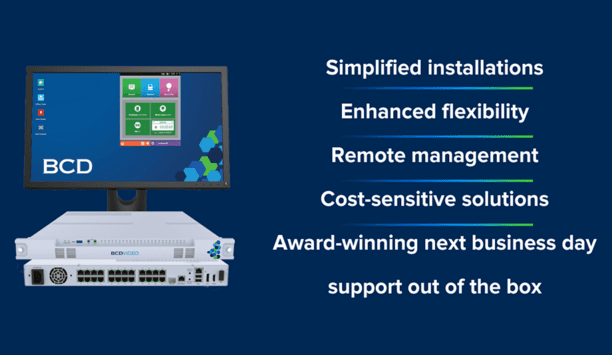
Understanding All-In-One Solutions
Download
How Video Technology Is Transforming Loss Prevention, Operations, And Customer Experience In The Retail Sector
Download
Why SAAS Security Platform Is More Popular In American SMEs
Download
A Guide To Moving Physical Security Into The Cloud
Download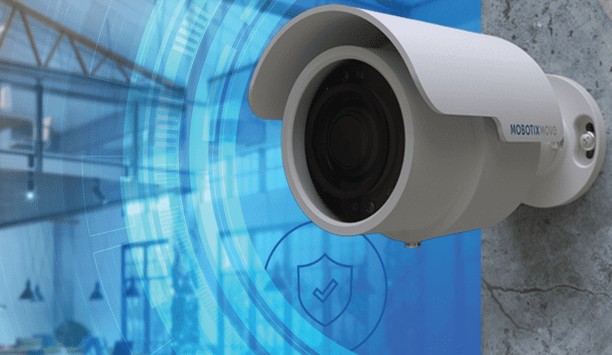
Intelligent Video Security Solutions
Download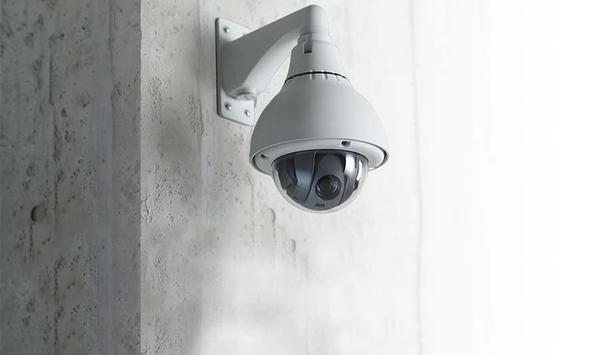
Security Investments Retailers Should Consider For Their 2021 Budget
Download
Smart Security Cameras: Excellence in Retail
Download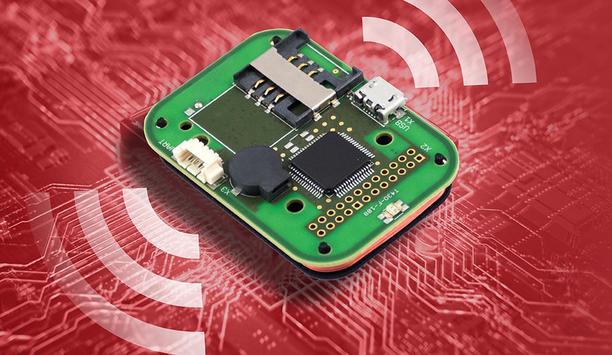
11 Considerations For Embedded System RFID Readers
Download
Nine Ways To Make Your Retail Security System Work Harder
Download
Loss Prevention and Beyond: How Video Innovation Enriches Retailers
Download


